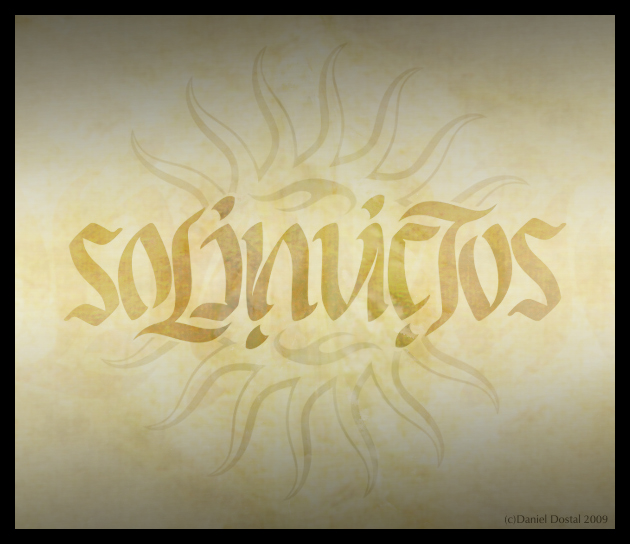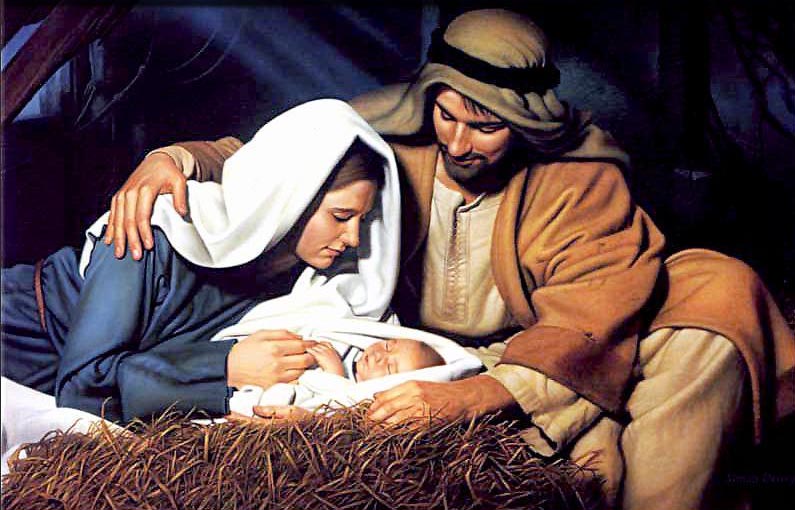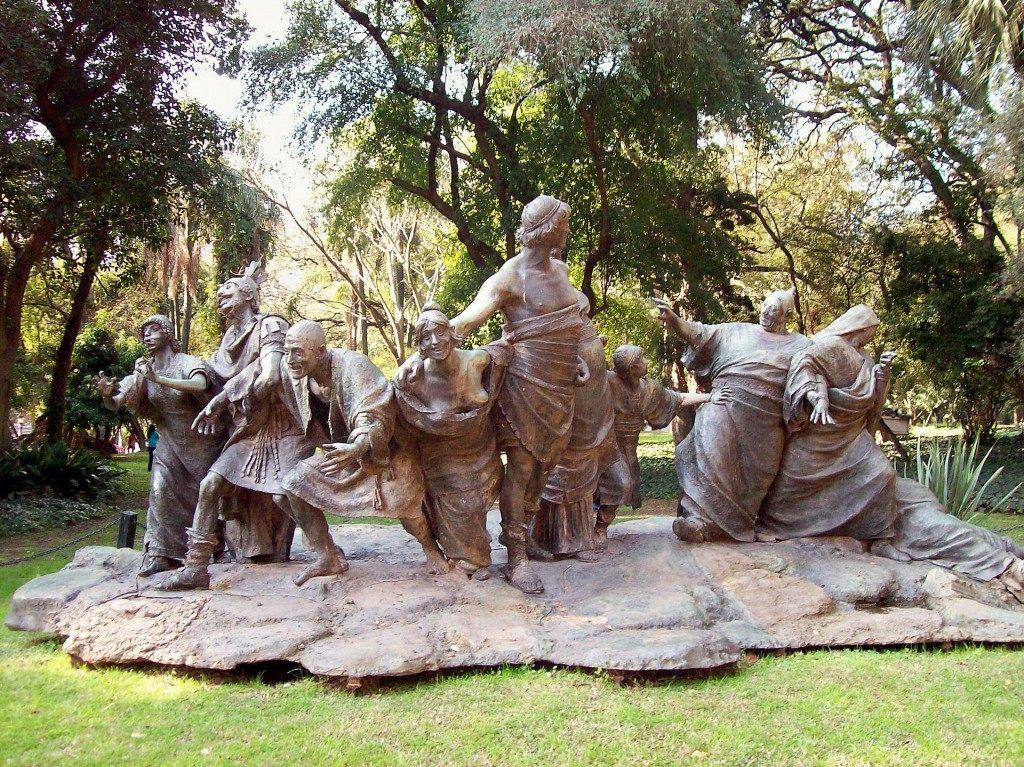
Dies Natalis of Sol Invicti

[dropcaps] C [/dropcaps] hristmas has always been my favorite holiday, possibly stemming from the fact that I was an only child and the holiday pretty much evolved around me. Being the only male in my generation on my father’s side and the oldest grandchild on my mother’s side didn’t hurt, either.
I have always been curious as to why people do specific things; things like why do some people insist on a domestic car as opposed to an import, or why a Ford and not a Chevy? Everything we do we do “because.”
Several years ago, my wife was teaching music at a public elementary school and was looking for something for the December PTA meeting program. The school wasn’t going to spend any money to buy a prepared program, and the PTA didn’t have any money to spend, either. I thought maybe I could come up with something, and I began to look into various customs relating to the Christmas holidays.
I soon realized there was enough material out there that it could take a year or more to develop something for her. Fortunately, she came up with something on her own.
I looked into the origins of Santa Clause, also known as Father Christmas and several other aliases in various countries and cultures. I discovered St. Lucia, St. Nicholas and Good King Wenceslas. I read up on the Christmas tree and why lights and tinsel.
The primary question that came to my mind was why do we celebrate the birth of Christ on Dec. 25?
Only two of the four Gospels mention the birth of Jesus. The Gospel of Matthew devotes two chapters to record the birth and is concerned with justifying Christ as the fulfillment of the prophecies and not reporting the events that led up to the birth. Matthew was probably written for a community of converted Jews.
 The Gospel of Luke contains what is recognized as the Christmas story. It was probably written 80-100 years after the birth, and his sources were most likely two or three generations removed from the events. Luke was written for a community of Gentile converts. Neither Gospel was intended to be what we would call a historical work. Histories, as we know them, came along several centuries later.
The Gospel of Luke contains what is recognized as the Christmas story. It was probably written 80-100 years after the birth, and his sources were most likely two or three generations removed from the events. Luke was written for a community of Gentile converts. Neither Gospel was intended to be what we would call a historical work. Histories, as we know them, came along several centuries later.
Luke’s Gospel tells us there were shepherds in the fields, tending their flocks. Scholars have pointed out that in Judea, in December 2000 years ago, there would be little for the sheep to graze on left in the fields. Instead, they would be sent out to graze most likely in the spring, when foliage had started to grow.
So the birth had to happen in early spring … or maybe not. Luke was mistaken about a few other things.
He tells us the birth took place during the reign of King Herod. Theologians believe this to be Herod the Great. Herod the Great died in the year 4 B.C.
Luke also tells us the reason for the journey to Bethlehem was to respond to the census ordered by Caesar Augustus. The census took place in the years 6-7 A.D.,which was 10 years after Harod’s death and was ordered by Quirinius, who was appointed governor of the province of Syria, which included all of Israel.
At that time, there were two towns named Bethlehem in the Roman province of Syria. One was in Judea, several days journey by donkey from Nazareth. The other was in Galilee, only a few days’ journey from Nazareth. For several hundred years, Bethlehem in Galilee was considered as the possible birthplace. A monastery existed there until the area was abandoned by the Byzantines. For the first few centuries, the church was little concerned with historical fact.
For thousands of years, mankind has recognized the significance of the winter solstice that marks the beginning of the return of the sun, but the solstice occurs on or about Dec. 21, not the 25th.
The Romans had a small problem when it came to their calendar. It originally had 10 months of 36 days each with five days left over. These unaccounted-for days became cause for celebration. As Rome progressed from a kingdom to a republic and finally as an empire, the holiday known as Saturnalia persisted. As the holiday developed, no business, either public or private, could be conducted; war could not be declared; some laws were suspended, and public mores were often ignored.

The length of the holiday varied from as few as three days to almost two weeks, eventually beginning on Dec. 17. Saturnalia began with a public religious celebration at the Temple of Saturn in the Forum. A pig was sacrificed, and then a public banquet followed.
As the city grew in size, the banquet became less manageable, and families withdrew to their homes to continue the celebration. The center of the family banquet included roast pork. Anyone planning on having one of those spiral-cut hams for Christmas dinner? Ham has been a part of my family’s Christmas celebration for at least the last three generations.
There are a few other parallels to be found between Christmas and Saturnalia. I already mentioned businesses were shut down. The last two companies that I worked for shut down from Dec. 23 until Jan. 2. The Romans sometimes gave their employees a small bonus so they could join in the tradition of gift giving. Occasionally, I was given a small Christmas bonus. Gifts were exchanged between family and friends; the children usually received toys.
We know the everyday dress for Roman men was the toga. However, for banquets, they would set aside the toga in favor of the synthesis, colorful dinner clothes adopted from the Greeks. Don’t we dress up a little for Christmas?
Romans normally went about bare-headed. But for Saturnalia, they would don the pileus, a cone-shaped felt hat, normally the mark of a free man. However, during Saturnalia, everyone, including slaves, wore these hats. Probably looked a bit like this (a Santa hat).
Although we do not observe it in the U.S., our British cousins observe Boxing Day on Dec. 26. On Boxing Day, the gentry take on the role of the servant, serving their meals, etc. They also used that day to give their servants gifts; hence the term “boxing.” One of the days during Saturnalia was also a day of role reversal, when masters served and gifted their slaves.
Interestingly, the Romans adopted much of their celebration from the Greeks. Even the Talmud mentions a pagan festival called Saturna, which occurred eight days before the winter solstice, when Adam noticed the days were getting shorter and thought it was punishment for his sin. For eight days, Adam sat and fasted. This was followed by Kalenda, eight days of celebration as he realized the days were getting longer.
 However, it is most important that we remember we do this as a recognition that Jesus Christ came into this world at some time and at some place; exactly when or where really doesn’t matter. He grew to adulthood as a loving, obedient son in a loving family, setting an example for us to follow. He spent his years of ministry teaching us how to live an honorable and just life before giving his life to atone for our sins.
However, it is most important that we remember we do this as a recognition that Jesus Christ came into this world at some time and at some place; exactly when or where really doesn’t matter. He grew to adulthood as a loving, obedient son in a loving family, setting an example for us to follow. He spent his years of ministry teaching us how to live an honorable and just life before giving his life to atone for our sins.
Christmas is for kids. We should observe it as the beginning of our redemption and salvation.
None of this answers why Dec. 25. The church has time and again adopted local customs, interpreting and redefining them to support Christianity. To mark the end of Saturnalia, Rome added a holiday known as the Dies Natalis of Sol Invicti, the Birthday of the Unconquerable Sun. The day selected was Dec. 25.

